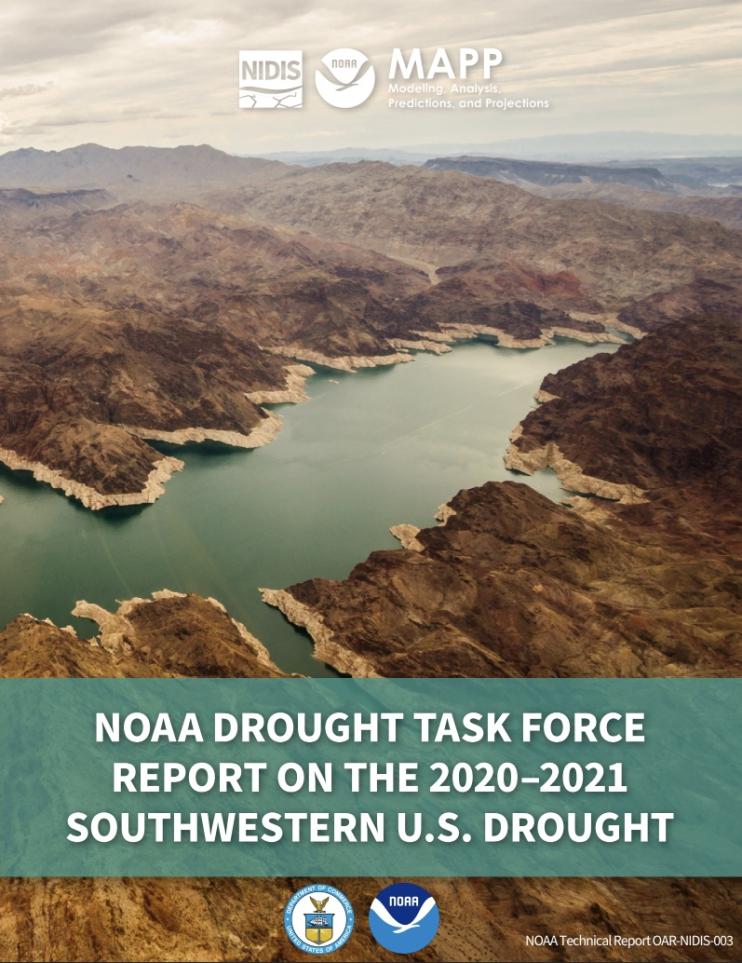For the latest forecasts and critical weather information, visit weather.gov.
MAPP/NIDIS Drought Task Force IV

The NOAA Climate Program Office’s Modeling, Analysis, Predictions, and Projections (MAPP) Program organizes the Drought Task Force IV (DTF IV) to coordinate the activities of researchers supported through the MAPP/National Integrated Drought Information System (NIDIS) Fiscal Year 2020 grant competition, "Characterizing and Anticipating U.S. Droughts’ Complex Interactions." The goal of this research initiative is to advance the understanding of drought causes and predictability, as well as drought modeling, prediction, and monitoring capabilities. This initiative builds on three previous MAPP Drought Task Force efforts (DTF I, DTF II, and DTF III) and decades of preceding research on drought, hydroclimate, and related modeling.
The core membership of the Task Force is composed of MAPP/NIDIS-funded investigators from universities, NOAA, and other federal centers and laboratories. Membership in the Task Force can also include invited scientists and other individuals from across the community with interest and expertise in Drought Task Force research areas.
The Drought Task Force IV leads are:
- Rong Fu (Co-Lead), University of California Los Angeles
- Andrew Hoell (Co-Lead), NOAA Physical Sciences Laboratory
- Justin Mankin (Co-Lead), Dartmouth College
- Isla Simpson (Co-Lead), National Center for Atmospheric Research
For more information, please contact Veva Deheza (veva.deheza@noaa.gov).
Research Snapshot
What to expect from this research
Emergent opportunities may arise to synthesize collective drought efforts through technical reports, review articles, or journal special collections and to engage with the rest of the community via workshops and meeting sessions. The Drought Task Force IV has thus far produced:
- NOAA Drought Task Force Report on the 2020–2021 Southwestern U.S. Drought
- PNAS Article: Quantifying Contributions of Natural Variability and Anthropogenic Forcings on Increased Fire Weather Risk Over the Western United States
- EOS Opinion Article: Tackling the Challenges of a Drier, Hotter, More Fire-Prone Future





